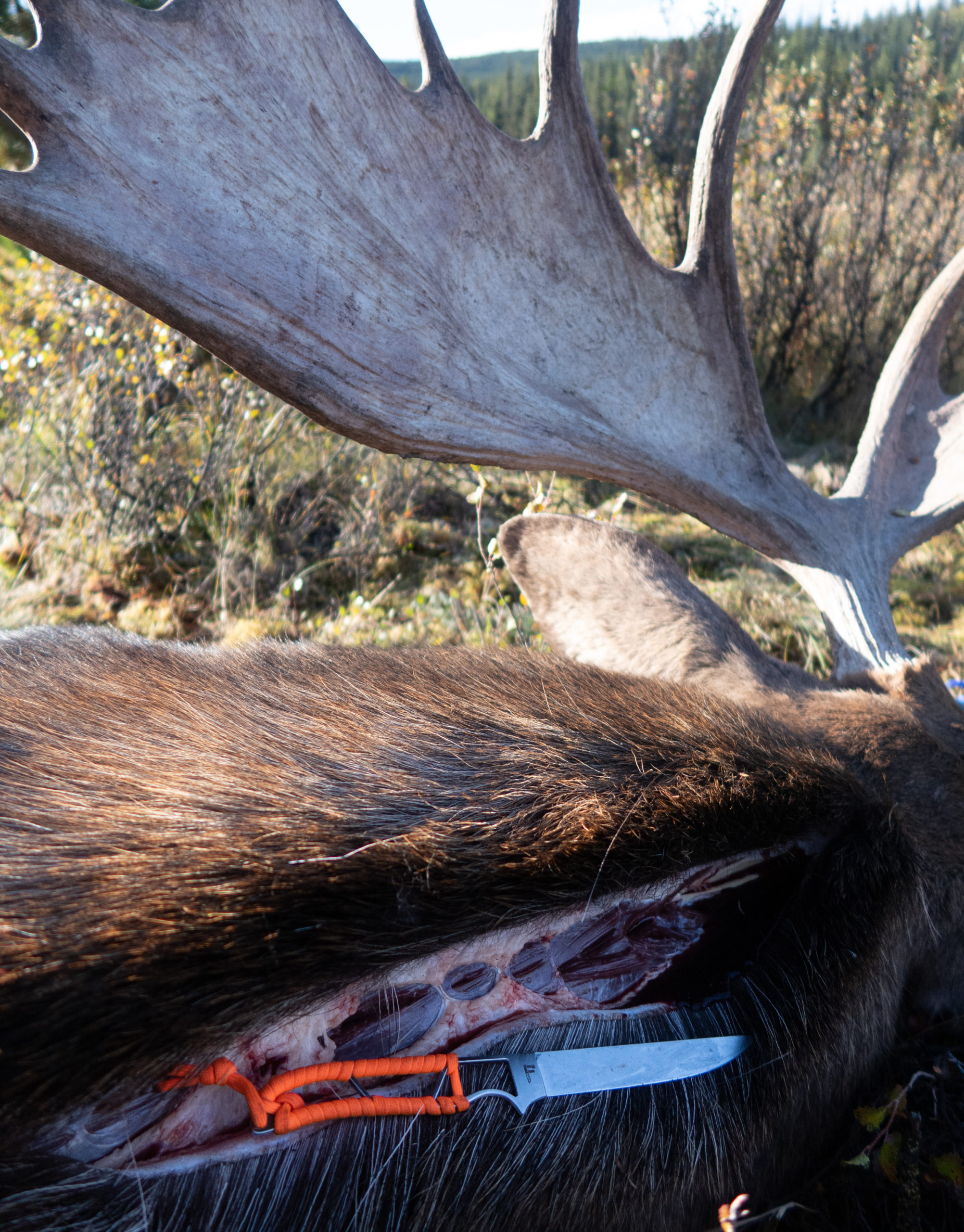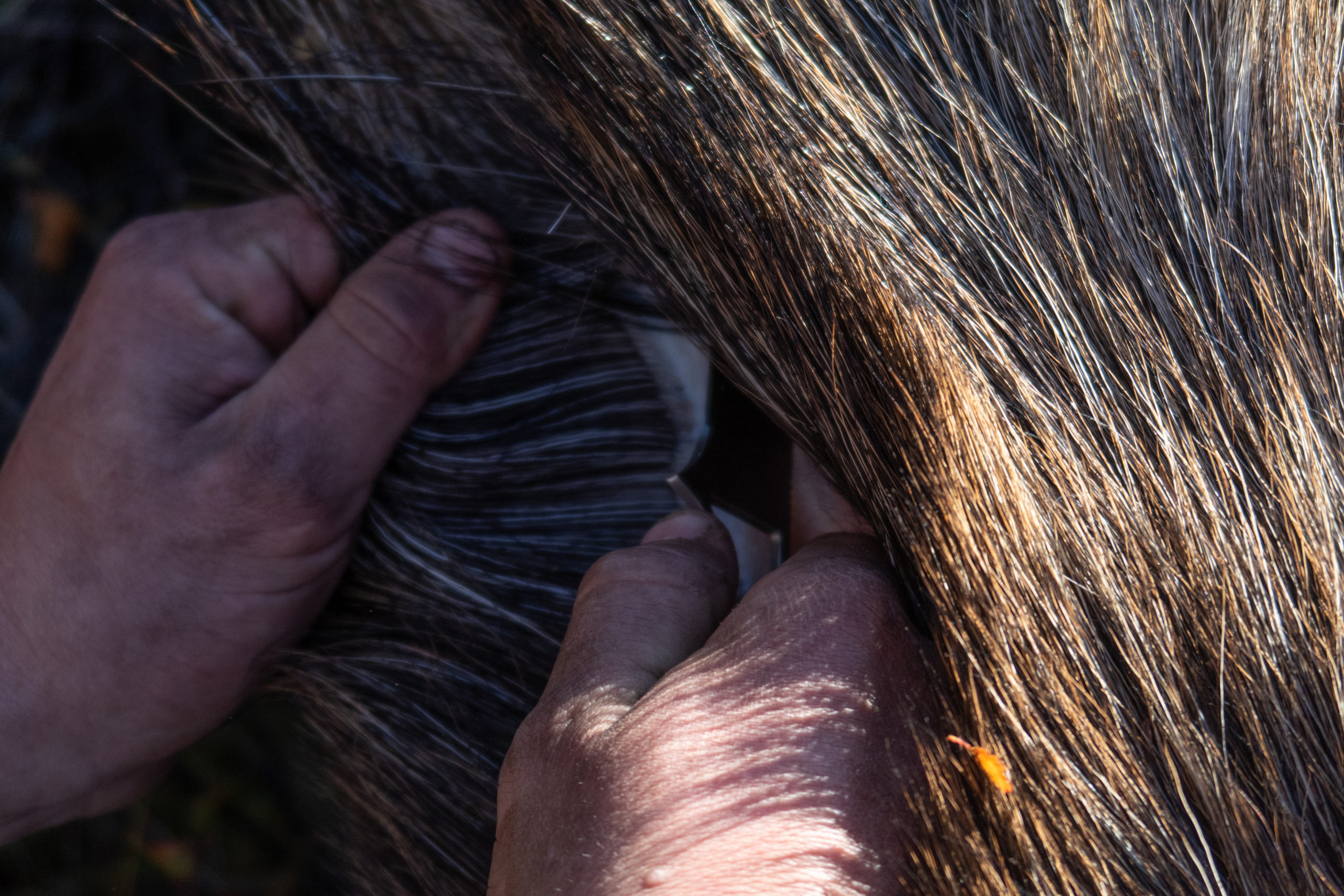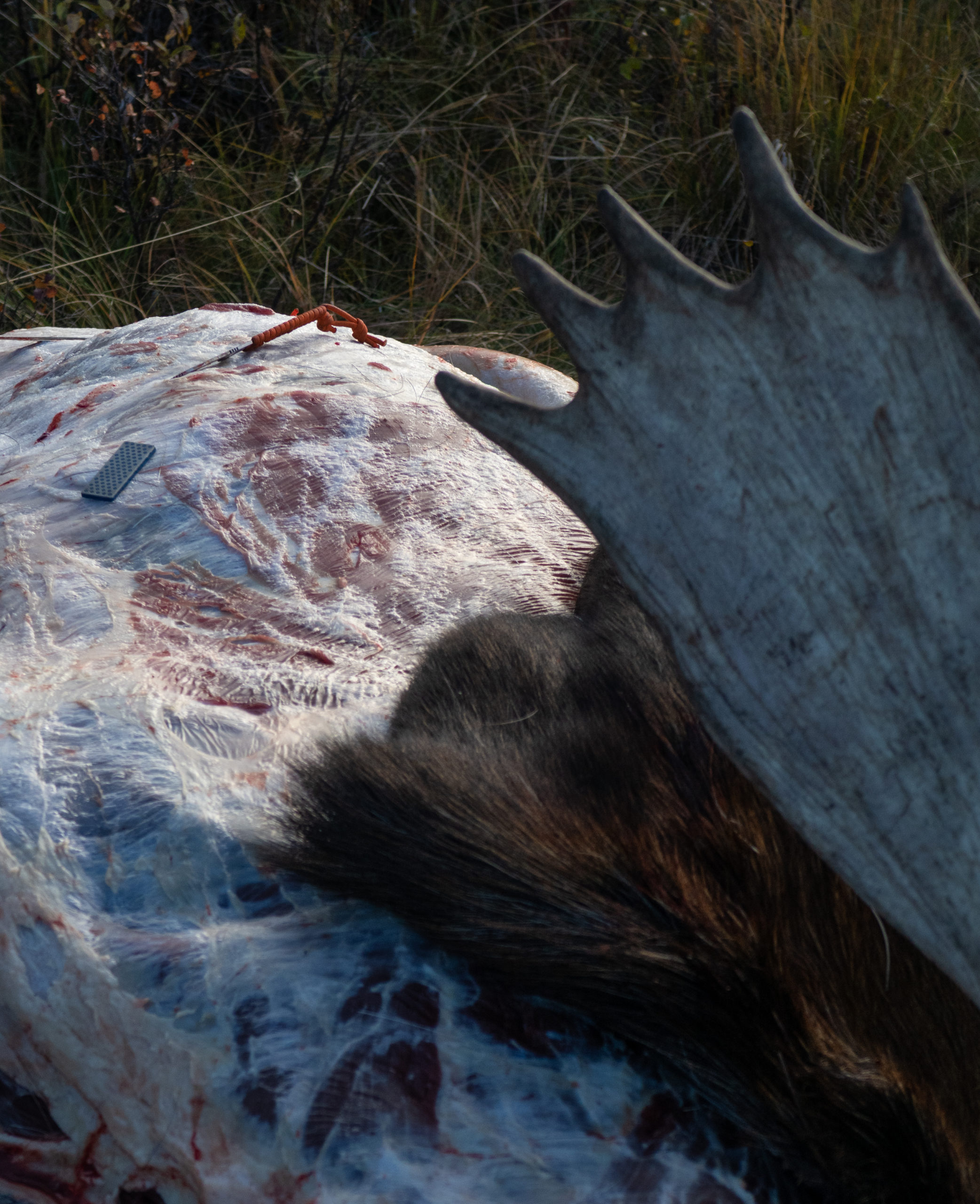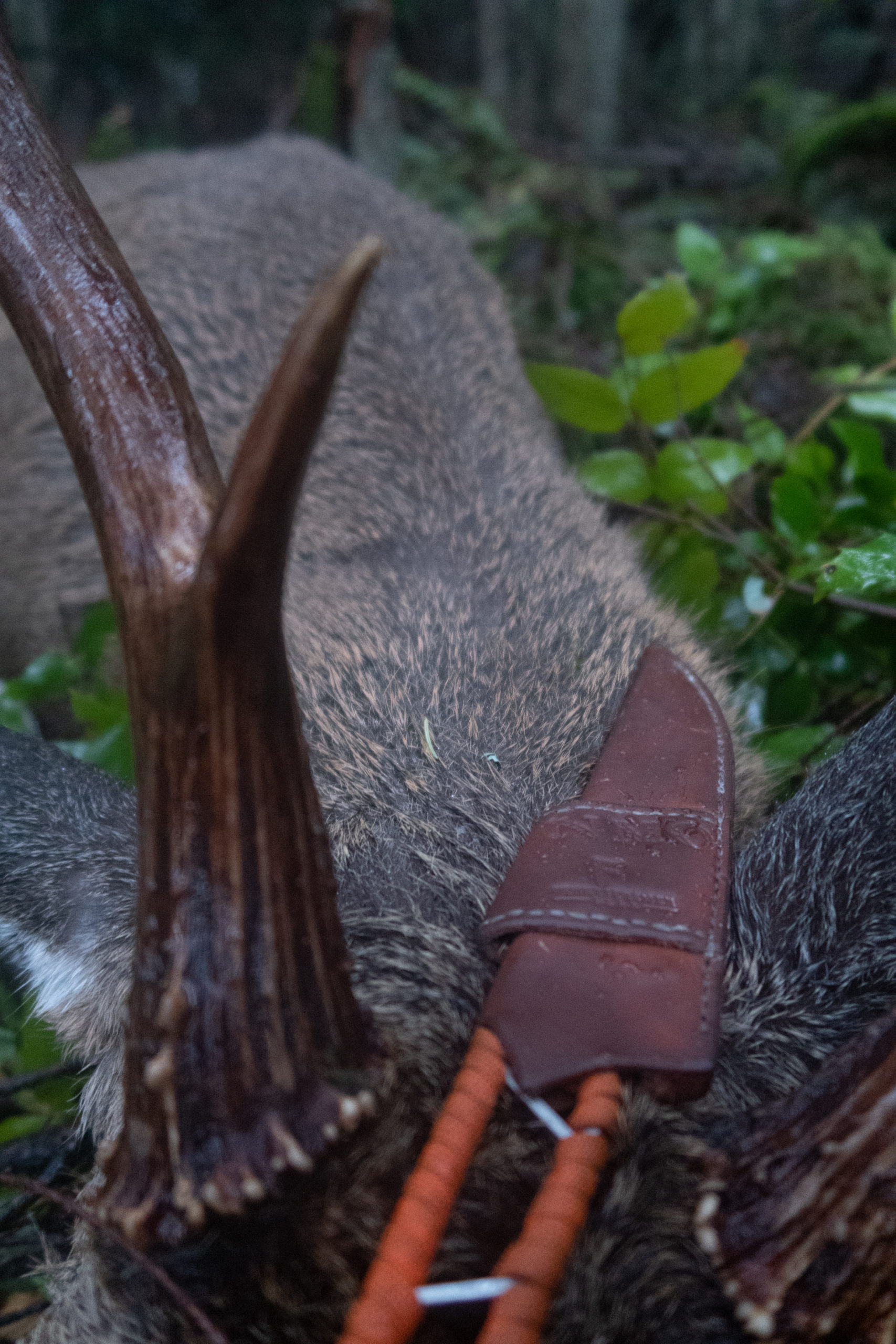Knives are one of the most simple and crucial pieces of kit you carry into the field when it comes to hunting. We are all familiar with them — their existence is inextricably linked to ours, reaching as far back as the Oldowan of Tanzania 2.6 million years ago — yet they are often given little thought. And while the commencement of a successful hunt is reliant on a blade and one’s own ability to wield it, a good field knife will undoubtedly be used for many things outside of just skinning and deboning. The question then becomes, what makes a good field knife?
Between the assorted gadgets we carry and our desire to push further into the backcountry while backpack hunting, shaving weight wherever we can seems to be more of a “need to have” than a “nice to have” these days. Over the years, I’d strayed from fixed blade knives in favour of replaceable blade scalpels for all the obvious reasons. They are sharp, light, and mainly foolproof to use.
Despite their ease of use, there are two things I don’t like about replaceable blade knives. They break relatively easily, and they create more waste. The latter being the greater detractor for me, as having sound technique while skinning & breaking down game will drastically reduce the number of blades you snap. So, while wonderfully sharp & foolproof to use (as in keep sharp by replacing blades) they are, we can likely all agree that replaceable blade knives don’t qualify as “a good field knife.” They are neither durable nor versatile.
In that respect, I need a knife made from quality steel with a functional blade design that is durable and easy to maintain. Bonus points if it feels natural in hand, is reasonably light for its purpose, and has pleasing aesthetics. Lucky for me, my quest for a high-performance big game knife had barely begun when it came to an end this spring, after Tanner Dannish of Frontiersmen Gear got a hold of me, asking if I would be interested in putting one of his prototypes through the paces.
I’d yet to handle one of his blades but had seen the beauty of his work, and I knew a few pretty serious backcountry hunters that whispered high praise of their build quality and functionality. To say I was excited at the prospect was an understatement.
“A knife with enough length to remove entire backstraps in one slice, debone large quarters with ease, and skin a big game animal quickly.”
The Uncia
The prototype knife in question was the Uncia, the third installment of Frontiersmen’s “Mountain Series” blades. For the uninformed, Tanner built the backbone of Frontiersmen Gear on jaw-dropping high-quality purpose-built custom knives. In 2020 he unveiled the “Mountain Series” line – lightweight, spartan blades designed to perform deep in the backcountry. As a resident of Northern British Columbia and avid backpack hunter, he understands the desire to shave ounces and the needs of a dude breaking down a bull elk miles from the nearest blacktop, logging road, or cell tower.
The Uncia – named after the snow leopard – is long and lithe, with a 5.2” cutting edge and a 10.25” overall length. It feels like a beefier filet knife crossed with a classic butcher’s blade… perfect. It is no surprise that this blade is designed to break down big ungulates.
Tanner’s own description of the knife is spot-on. “The Uncia was designed for the most extreme hunter/adventurer. A knife with enough length to remove entire backstraps in one slice, debone large quarters with ease and skin a big game animal quickly. Thumb jimping along the spine gives you complete blade control without adding unnecessary weight. Built from Nitro-V premium stainless steel to battle rust in the worst conditions and provide extreme edge retention. The Uncia blade comes with a friction lock custom leather neck sheath to always keep you and your knife safe. A Scout carry sheath is available for any horizontal carrying on a thin belt or pack/harness straps.
Specs:
– Steel – Nitro-V premium stainless steel (60-61 HRC)
– Edge – Flat grind
– Finish – Machined Satin
– Thickness – 3/32″
– Cutting edge – 5.2″
– Overall length – 10.25″
Weight: (Weights are an average and may differ as it is a handmade product)
– 1.70 oz – Uncia with paracord lanyard
– 2.95 oz – Uncia with paracord lanyard and leather friction lock sheath
– + 0.18 oz – Paracord wrapped handle
– + 0.18 oz – Paracord necklace
– 3.31oz w Paracord lanyard, leather friction lock sheath, paracord handle & necklace.
In The Field
I’ve spent a lot of time with a knife in my hand in the last decade. While hunting knives started out as an interest, they’ve become a critical tool for my work as a hunting guide in BC’s Northern Rockies in the last seven years. I’ve used a variety of modern blades on moose, white and blacktail deer, mulies, black bears, grizzly, mountain goats, caribou, stone sheep, and one Roosevelt elk. I can tell you that if you learn one thing while cutting up animals in shitty situations year after year, it is which knives work and which don’t. The Uncia was bred to work.
In the fall of 2021, I used the Uncia to skin, quarter, and debone two bull moose, a mule deer, blacktail deer, feral goat, and various stages of breakdown on a stone sheep and a mountain goat. It should come as no surprise that it performed admirably on the big stuff – cutting out moose back straps in two clean strokes and deboning massive rear quarters without making a butchery of them. The blade length and belly shape also make it a natural fit for skinning XL-sized game, like moose, and the thoughtfully placed thumb jimping is a nice touch when the temperatures dip below zero and your hands are bloody.
What really took me by surprise was how natural and small in hand the Uncia felt while skinning deer-sized game. With thinner, more delicate skin, it’s a task that smaller skinning and caping blades typically shine. When I say small in hand, I mean nimble and precise – no small feat for a 5.2” blade that’s still solid enough to pry on joints if you are foolish enough to do so.
Though it’s much longer than ideal for caping, and I’d recommend a dedicated caping blade if you’re turning the eyes/nose/lips on the trophy of a lifetime, the Uncia’s nose profile will work in a pinch.
In addition to this, it became my go-to backcountry chef knife — part of my job description is cooking for my client and wrangler daily for nearly three months in the mountains. While I am sure this wasn’t the intended use for this blade, rest assured you won’t find a better backpacking blade that is equally at home deboning giant bull moose as it is slicing onions and mushrooms nice and thin for a saute over the fire.
As with all current Frontiersmen blades, the Uncia is built with robust Nitro-V premium stainless steel, finished on the Rockwell hardness scale between 60-61. To the layman, this means you end up with a durably hard knife that isn’t impossible to re-sharpen and has high corrosion resistance. My Uncia has held up incredibly well across the four months spent in the field, and the only real signs of wear it shows are the faintest horizontal drag marks of the brillo pads I scoured it with while cleaning it. Re-sharpening has been simple, spend a minute or two touching up the blade with a diamond file/sharpening stone after using it, and it is shaving sharp again.
Frontiersmen Gear knives come backed with a lifetime warranty that includes re-sharpening whether you’ve bought it directly from Frontiersman Gear, second-hand, or gifted it.
Author’s Note: If you can’t reliably keep your blades shaving sharp, you’re not sharpening them properly. A sharp knife is a safe knife, so take the time to learn how to sharpen your knives correctly or send them off for professional sharpening.






